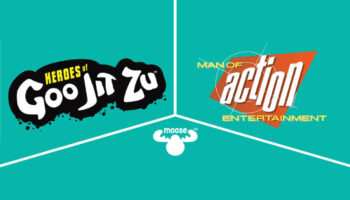Pitch Perfect? Part 3: Follow Up… Serial inventor Ellie Dix shares her private pitching tips.

Here we are again! Thank you for spending so much time on this, Ellie… In our first chat about the pitching process, we went over how you research and prepare. In the second, we covered the the pitch itself. Today, we’re moving to what I think is the least intuitive part – follow up.
You think it’s the least intuitive?
Yes, I think any number of new inventors can get a sense of direction and then bluff their way through a pitch… But that seems not to be true with follow up. Either because they don’t understand what it is, or because they don’t know how to do it. Even some professionals become completely inert when publishers go quiet on them! So let’s get into this. First, I think you and I would agree that follow up starts with the research…
Yes, because when you research the names of the people to whom you’re going to pitch, you may very well find out how they like to be followed up. This is something you and Billy Langsworthy address quite often, which is very helpful. It takes all the guesswork out of it.
But what if we haven’t? Or what if – as happens from time to time – the inventor relations folk don’t express a particularly strong view on it?
In that case, I make sure I save a few minutes to lay the groundwork for follow up while I’m in the pitch room – real or virtual. You might be tempted to skip this because you’ve only got a short amount of time, and you want to use it to talk about your ideas. But it’s really important to find out HOW you should follow up. I can’t stress this enough! No matter how great your pitch was, publishers aren’t likely to chase you for your product. It’s your job to follow up. So before you leave the room, there are really four things I make sure I do…

Just four? This sounds like it’s going to be manageable!
It is; they’re all very simple – you just have to remember to do them. In order of importance they are: Get an email address. Find out which of your ideas they’re interested in – if any! Then ask what material they’d like to see in terms of follow up… Some people will want you to send them your sizzle video, some will want images, rulebooks or sell sheets. Some will want all of it, and some won’t want any of it.
Finally, ask about their follow up process and timescale. And I know I’m preaching to the converted when I tell you this, Deej, because you and Billy wrote much the same thing in your book, The Snakes & Ladders of Creative Thinking.
Yes, and almost all the confident inventors to whom we speak say that – if there appears to be interest in any of their ideas – they ask three questions… What’s next? To whom should I speak? When should we tie in? Most inventor, relations people are easily able to give that information, and happy to do so.
On top of that, my advice would be to make sure you write it all down, of course! Because it’s one thing to ask all the right questions – but unless you write them down, the answers are pretty useless! You won’t remember them – especially if you’re doing multiple pitches back-to-back.
And just going back to something you said in our first conversation about pitching… You create, do you not, index cards for each one of your pitches? So is that where you write the information down?
Yes, on one card for each of the companies and games I’m showing. And – because of the preparation – those cards already have written on them the names of the inventor relations people and the games I’m showing. Which means I just have to put a tick or a cross next to the games to show whether or not they’re interested. Then I add their names and email addresses and add any other relevant notes. Also, if a publisher makes a comment that might help me with future pitches, I make a note of that too.

After an intensive pitch event, you might find it tempting to collapse in a heap, then start addressing all the other things you put on hold earlier. I wouldn’t advise that, though. I think you should do your follow up pretty quickly. Different companies will want different things, but if you said you’d send them sell sheets and videos, do that as soon as you can. I think this is where lots of designers fall down.
Why is that, do you think?
I think maybe that the follow up feels boring. Maybe boring’s not the right word – it’s not very exciting; put it like that… It’s a lot of bits and pieces and admin. But you talk to a lot of inventors… What do you think stops them doing follow up?
I think there are a couple of very subtle factors. One is simply that – unlike the rest of the process – there’s no external deadline attached to your follow up. You know the date on which you’re going to pitch, for example, so you have to do all your prep by then. And on the day itself, you know the time of your slots so you know when you’ve got to deliver! But the follow up is down to you. And there are countless studies, books and articles that explain why things that don’t have deadlines are less likely to happen.
Interesting. And did you say there was a second reason?
I did… I like that we’ve switched roles here, by the way! The other thing at play, I think, is that there’s very little information out there on HOW to follow up! In that vacuum, it’s difficult to feel confident about how much follow up is the right amount. How soon is too soon to chase? At what point does my follow up become badgering? And what point does my badgering become stalking?
Ha!
Without people being able to say, with any certainty, what the answers to those questions are I think it creates inertia. Follow up is a tricky cove!
Right… Well, given how important it is, I think it really helps to find out as much as you can about how and when publishers are going to review your items. And I think Billy collated an interesting piece on this…

Right! He did an article on follow up called Chasing, ghosting and feedback: Inventors discuss post-pitch follow up. A lot of wonderful contributors; people can read that here… Seems to have run out of budget when it came to images, but other than that it’s a great piece! You’ve picked up on a very subtle reason why follow up is important from a publisher point of view, as well; this is in terms of what it says about you…
Oh, yes! So there’s the obvious reason to be timely with your follow up, which is that companies have time scheduled in to review the concepts they see after pitch events. If they don’t have information about your games, they won’t get reviewed.
More subtle is that – because so many inventors don’t do it in a timely fashion – I think you can set yourself apart from other inventors! Send out what they’ve asked for quickly. This shows the kind of designer you are. You’re not only inventive and enthusiastic and attentive; you’re also reliable and businesslike. If you’re easy to work with – they’re more likely to work with you.
And in terms of your timescale for…
Sorry! I just wanted to add one more thing about the reasons inventors might not like the follow up… I’m wondering if it’s because follow up is the one part of the process that, for some, feels most blatantly like ‘sales’… You have to remind people how brilliant your games are; you have to push…
I hadn’t thought about that. That’s interesting!
Because often, you don’t get a response – so you have to push again. That makes people self conscious; lots of people shy away from it because they aren’t that comfortable with self-promotion. Strangely, while the meeting itself is the real sales pitch – I mean, that’s why it’s called a pitch, right?! – that can just feel like having fun! You’re laughing and sharing games… When the interactive human element is removed, and it comes down to email communication, the sales element is thrown into sharp relief. I think that’s probably hard for some people.

That’s a really interesting thought. You might be on to something there! I’ll ask a few people about that… In the meanwhile, I was going to ask about your follow-up timescale Ellie, how long is a piece of string for you? What are your own expectations in regard to when to follow up? And – dare I say – when to stop?
That’s difficult. There’s no industry standard, of course, because publishers all make decisions at different speeds. Some have very clear processes and timelines. Others simply don’t!
But not – to be clear – in a nefarious way…
Oh, no! No, they just aren’t that systemised. As a result, I’ve had some publishers tell me they’re doing all their post-pitch reviews the week after the event… And I’ve had others that, nine months later, tell me they’ve not reviewed the concepts yet. This is something that can be difficult to keep track of! So I’m always careful to make a note of how and when I’ve followed up. I also set reminders for the next follow up… As I glean more information, I’m then able to refine the follow up for each publisher.
For example, if I’ve had no response from my original post-pitch follow up – the one with the sell sheets and video links – then I’ll send an email a couple of weeks later to check if they’ve received the first one. But I don’t have a standard follow up timescale after that because, as I say, it depends on the publisher. I will always follow up though – multiple times. And as a result of that, I’ve had publishers actually sign a game within a month of the original pitch… I’ve also had companies sign games over nine months later.
So tricky! But I think it’s important to persist.
I also think it’s important to track the products you’re pitching. You don’t want to get into a meeting and start showing a game only to be told they rejected it last year! It’s fine to resubmit something, but you have to have a good reason, and know you’re doing it. For that reason, I have a spreadsheet where I list each game I pitch to companies. When I send out a prototype or get a rejection, I update the status. There’s also a column for feedback… That way, I can check back on what I’ve pitched to companies in the past.
Something else you’re keen to put over is the importance of having a sizzle, and sell sheets that stand alone… Assets that don’t need you there to explain them!
Yes, because – and I honestly don’t know how obvious this is – the people that you pitch to aren’t the only people that decide whether or not to sign your game. Rather, they take them to discuss with their team. So the person you pitched to then pitches the idea – internally – for you! So the assets you send that person should really do the heavy lifting. Remember, inventor relations teams see a vast number of products. Don’t rely on someone else’s memory and patchy understanding of your game to do you full justice in an internal pitch.

Right. Your sizzle reel and sell sheet have to pitch the game for you…
They do, and they have to capture the essence of the game for the wider team to feel.
Well, we really need to start wrapping things up, Ellie, but I do want to thank you – tremendously – for the vast amount of time and thought and energy you’ve invested in this information. I think it’s terrific; it could really give new inventors a make-or-break insight into pitching. Thank you. Before we sign off, what’s your attitude towards rejections?
Ha! Well… You’re going to get rejections. Expect it and accept it! It’s not you that’s being rejected; its that idea for that company at that time. And remember: you could get an idea rejected by one company and accepted by another on the same day. It happens! You could even get the same company, accepting an idea they once rejected. I don’t think that’s as likely, but it does happen…
And in that respect, I think rejection is much more difficult for people if they’ve gone in thinking that the sole purpose of the pitch is to get a game signed. That’s a sure way to be disappointed! Instead – as I’ve said before – I’d suggest people aim, first and foremost, to develop good working relationships with people. That way, when you get a rejection, you can simply ask if it’s okay to come back to them with other ideas. This works for me because I want to be part of their stable of inventors.
I don’t think I’m divulging any industry secrets when I say that some companies have inventor email lists… If you’re on the list, you’ll sometimes receive wishlists quite independent of pitching events. You’ll be told when companies are doing product sweep and you’ll be invited to pitch.
Brilliant. Thank you so much, Ellie! Terrific stuff; I love it.
























